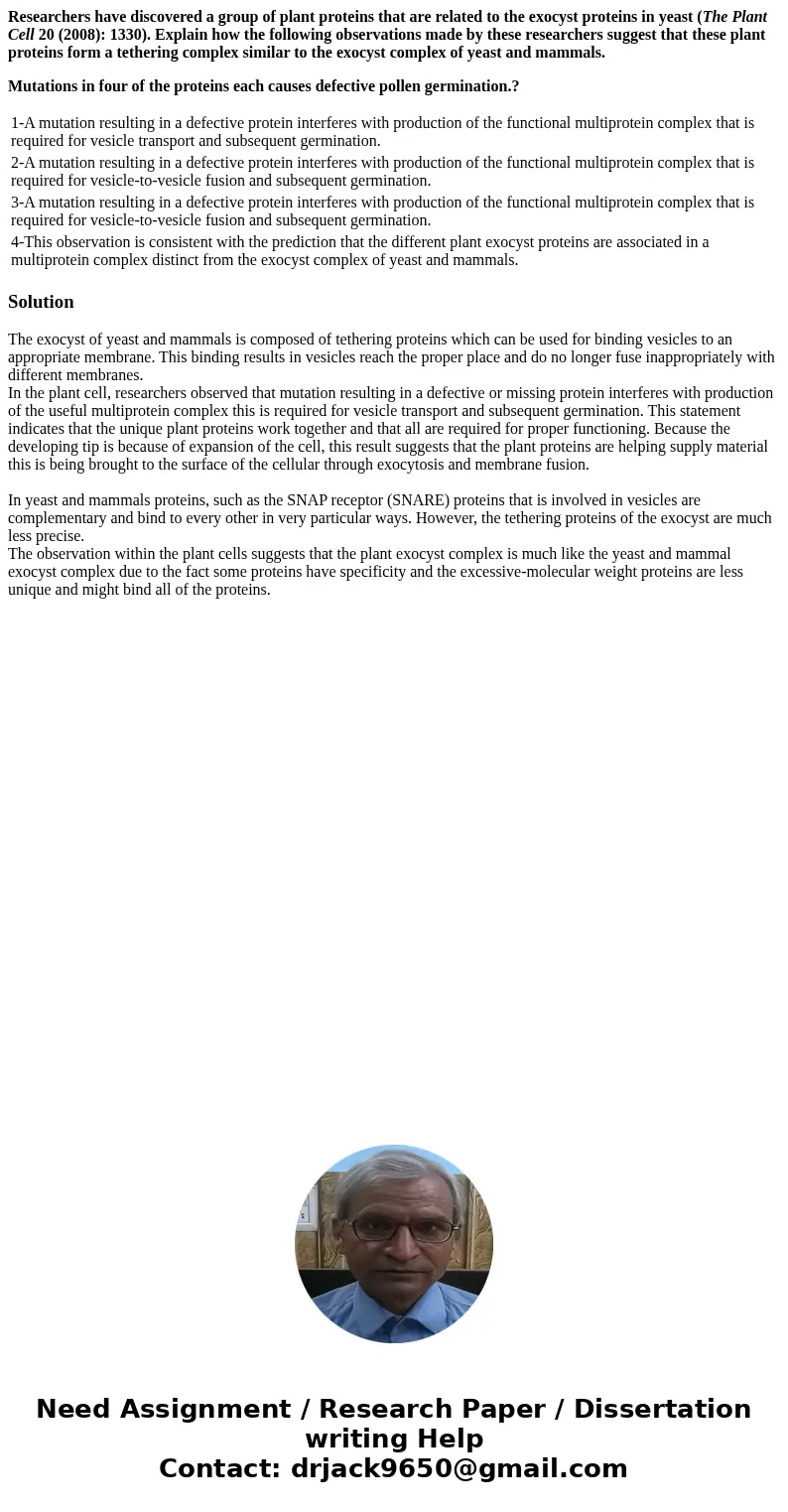Researchers have discovered a group of plant proteins that a
Researchers have discovered a group of plant proteins that are related to the exocyst proteins in yeast (The Plant Cell 20 (2008): 1330). Explain how the following observations made by these researchers suggest that these plant proteins form a tethering complex similar to the exocyst complex of yeast and mammals.
Mutations in four of the proteins each causes defective pollen germination.?
| 1-A mutation resulting in a defective protein interferes with production of the functional multiprotein complex that is required for vesicle transport and subsequent germination. |
| 2-A mutation resulting in a defective protein interferes with production of the functional multiprotein complex that is required for vesicle-to-vesicle fusion and subsequent germination. |
| 3-A mutation resulting in a defective protein interferes with production of the functional multiprotein complex that is required for vesicle-to-vesicle fusion and subsequent germination. |
| 4-This observation is consistent with the prediction that the different plant exocyst proteins are associated in a multiprotein complex distinct from the exocyst complex of yeast and mammals. |
Solution
The exocyst of yeast and mammals is composed of tethering proteins which can be used for binding vesicles to an appropriate membrane. This binding results in vesicles reach the proper place and do no longer fuse inappropriately with different membranes.
In the plant cell, researchers observed that mutation resulting in a defective or missing protein interferes with production of the useful multiprotein complex this is required for vesicle transport and subsequent germination. This statement indicates that the unique plant proteins work together and that all are required for proper functioning. Because the developing tip is because of expansion of the cell, this result suggests that the plant proteins are helping supply material this is being brought to the surface of the cellular through exocytosis and membrane fusion.
In yeast and mammals proteins, such as the SNAP receptor (SNARE) proteins that is involved in vesicles are complementary and bind to every other in very particular ways. However, the tethering proteins of the exocyst are much less precise.
The observation within the plant cells suggests that the plant exocyst complex is much like the yeast and mammal exocyst complex due to the fact some proteins have specificity and the excessive-molecular weight proteins are less unique and might bind all of the proteins.

 Homework Sourse
Homework Sourse